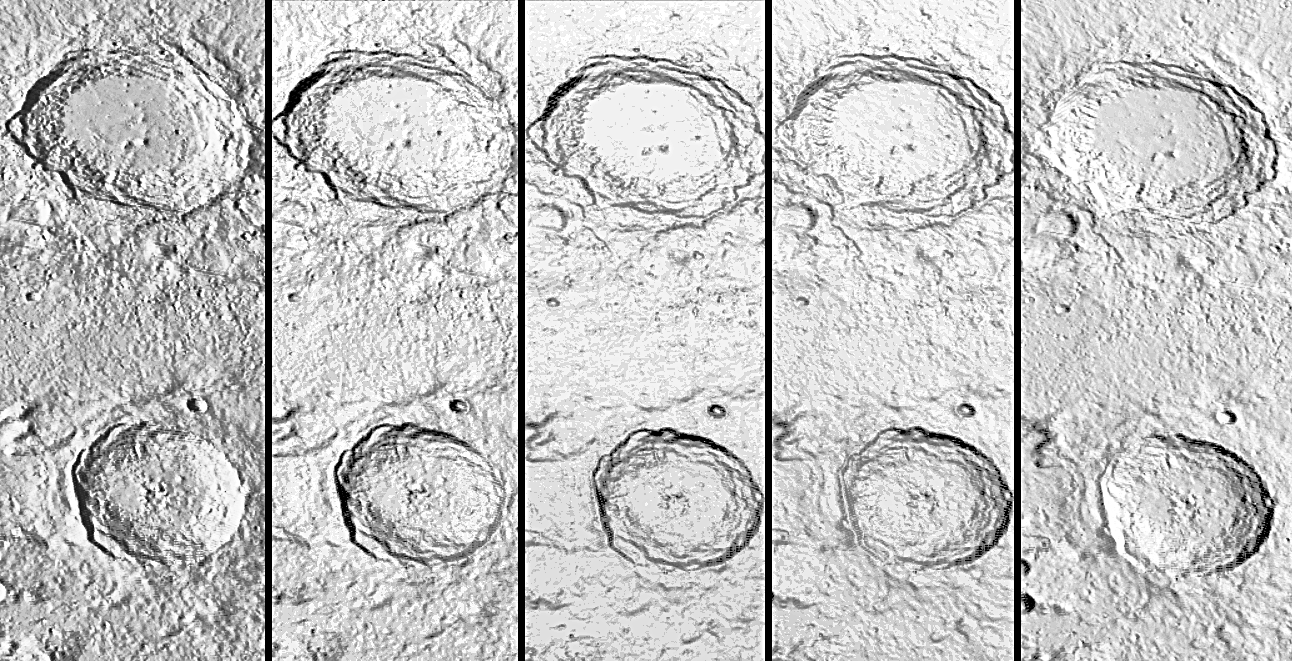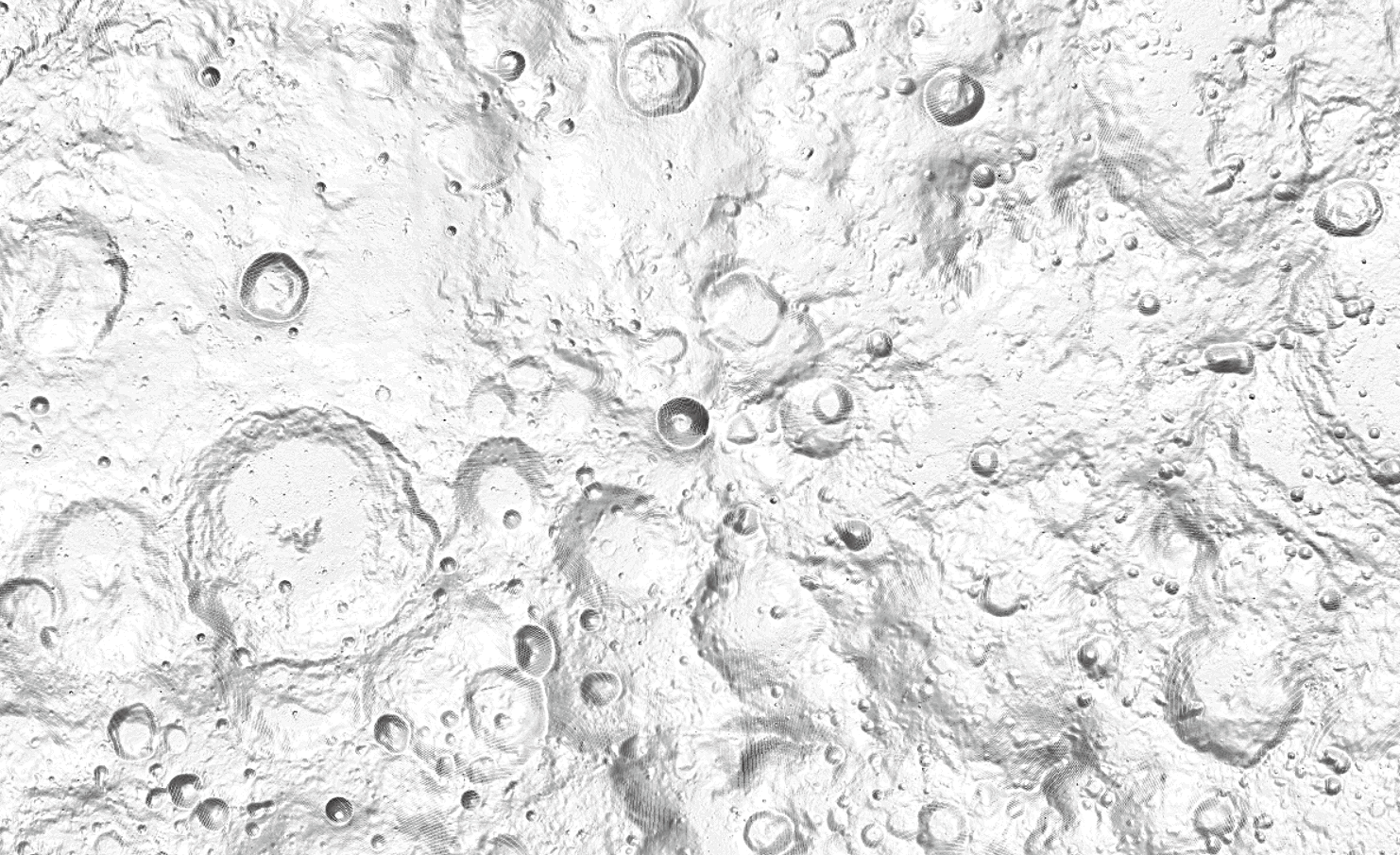Hello,
I am trying to find maps of the moon that have the least possible amount of shadows in them. The best I can find is the Clementine map but unfortunately, there are many data gaps in it. The LRO WAC and Kaguya maps on the USGS site have a lot of shadows on them.
However, there is a map that combines Clementine and Lunar Orbiter data but the problem is, my computer cannot even render this monster!!!
https://astrogeology.usgs.gov/search/map/Mo...saic_Global_59m
If someone with a more powerful computer could please help me get a version of this image that is 16384x8192 pixels, that would be great! I don't have access to Map a Planet to be able to get it.
Full Version: Need help resizing USGS map of moon
I am trying to find maps of the moon that have the least possible amount of shadows in them.
What about http://wms.lroc.asu.edu/lroc/view_rdr/WAC_EMP ?
China has a whole moon image available from Chang'e-1 which might do the job? It's 4Gb, and you'll need to register:
http://moon.bao.ac.cn/index_en.jsp
On the English version of the site, navigate to the lunar map, and look for the 'Download' link under 'base map' on the left hand side.
China's images all seem to be at local noon, so there are no (or minimal) shadows.
http://moon.bao.ac.cn/index_en.jsp
On the English version of the site, navigate to the lunar map, and look for the 'Download' link under 'base map' on the left hand side.
China's images all seem to be at local noon, so there are no (or minimal) shadows.
What about http://wms.lroc.asu.edu/lroc/view_rdr/WAC_EMP ?
Cool map but it doesn't go pole to pole. I need a cylindrical map. Though if you could find a cylindrical version that would be amazing!
I'm trying to navigate to the Chang'e map but I can't find what you are referring to Threadworm.
Yeah, Like Mercury, the moon doesn't like exposing it's ends to the sun. 
I like the Clementine map primarily because it mostly has images at high noon and thus doesn't have so many shadows interfering with the coverage to where only at the poles do shadows from craters affect it.
I like the Clementine map primarily because it mostly has images at high noon and thus doesn't have so many shadows interfering with the coverage to where only at the poles do shadows from craters affect it.
Use the LOLA shaded relief map to get topography in the shadow areas. Registered LROC mosaics and LOLA relief can be merged to give quite nice effects.
Phil
(Malapert Mountain at upper left, Amundsen at lower right) - so you can use the LROC-WAC low phase angle mosaic with poles treated this way)
Click to view attachment
Phil
(Malapert Mountain at upper left, Amundsen at lower right) - so you can use the LROC-WAC low phase angle mosaic with poles treated this way)
Click to view attachment
For half the product that you're looking for, you could project an image taken from Earth of the full Moon to a cylindrical projection. That won't have any shadows in it; combining images with different nutation would give you ~59% of the Moon; and, images up to 10K pixels wide exist (I've even taken them). BUTů hard luck about the back side.
Thanks! It looks really cool close up with the merging of 60's and 90's data!!!
The moon is very shy about mooning us with it's posterior.
For half the product that you're looking for, you could project an image taken from Earth of the full Moon to a cylindrical projection. That won't have any shadows in it; combining images with different nutation would give you ~59% of the Moon; and, images up to 10K pixels wide exist (I've even taken them). BUTů hard luck about the back side.
The moon is very shy about mooning us with it's posterior.
For what it's worth, I like the Unified Geological Map of the Moon at
https://astrogeology.usgs.gov/search/map/Mo...of_the_Moon_GIS
I downloaded it, then sent it in two pieces to Costco Photo, printed it as a poster and cut and pasted it together. It's up on my wall. Makes a nice poster.
bob k
https://astrogeology.usgs.gov/search/map/Mo...of_the_Moon_GIS
I downloaded it, then sent it in two pieces to Costco Photo, printed it as a poster and cut and pasted it together. It's up on my wall. Makes a nice poster.
bob k
Have you tried in using the DEM options in LTVT, where it is possible to show such features from any sun angle -- on the horizon or directly overhead (below,
shows Aristoteles and Eudoxes under various lighting conditions - west and east, while the second image is that of the South Pole).
John


shows Aristoteles and Eudoxes under various lighting conditions - west and east, while the second image is that of the South Pole).
John


For bigtiff sattelite images you need to use GDAL. You do not need a powerful computer to process large data.
Here is the gdal command you need to use: https://gdal.org/programs/gdal_translate.ht...anslate-outsize
Or alternatively, if you'd prefer a graphical interface and/or you work with geodata regularly, i'd recommend using QGIS.
Edit: I had not realized this was an old thread, sorry
Here is the gdal command you need to use: https://gdal.org/programs/gdal_translate.ht...anslate-outsize
CODE
gdal_translate.py -outsize 16384 8192 Lunar_LO_UVVISv2_Hybrid_Mosaic_Global_59m.tif Lunar_LO_UVVISv2_Hybrid_Mosaic_Global_59m_downsampled.tif
Or alternatively, if you'd prefer a graphical interface and/or you work with geodata regularly, i'd recommend using QGIS.
Edit: I had not realized this was an old thread, sorry
This is a "lo-fi" version of our main content. To view the full version with more information, formatting and images, please click here.
